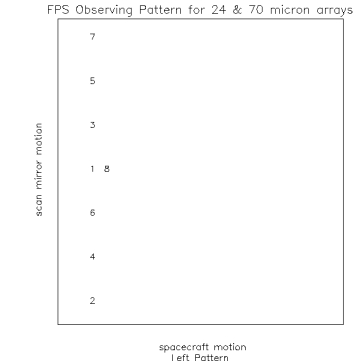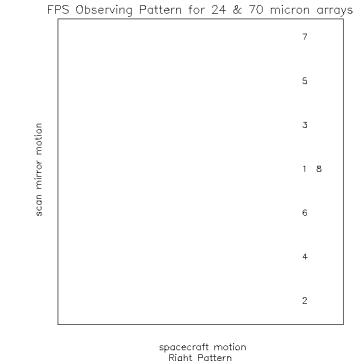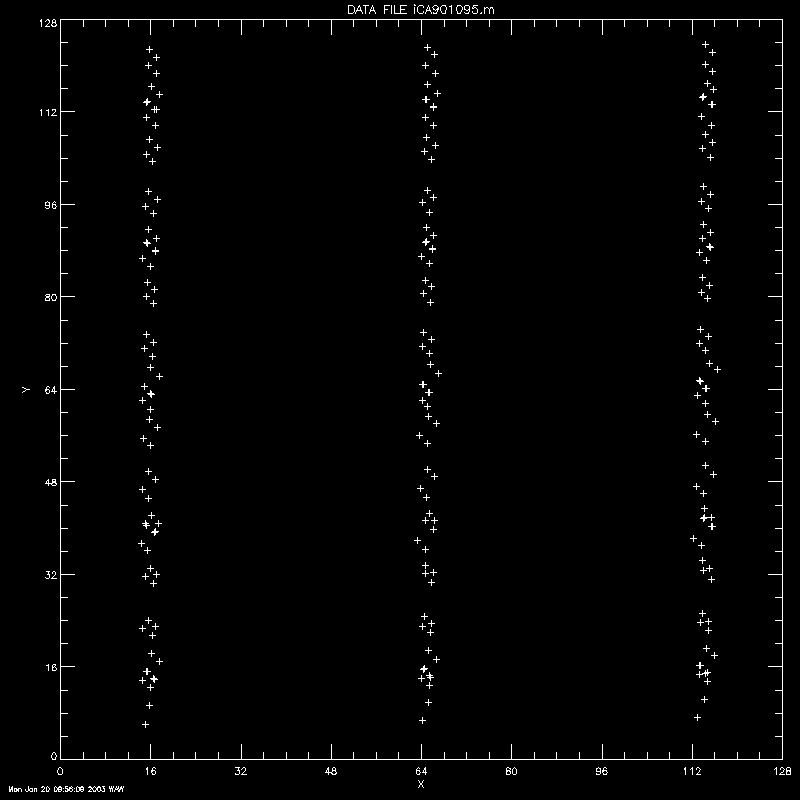


Figure 1. Observing Pattern at 3 locations on the detector. Note size of box is not the total size of the array but a portion of the central region which depends on array and if it is a coarse or fine survey
Principal: Jocelyn Keene
Deputy: Jane Morrison, Bill Wheaton
Data Monkey(s): Jane Morrison, Bill Wheaton
Priority: Critical
Downlink Priority: Normal
Analysis Time:
Last Updated:
To measure the pixel locations (i.e. array orientation, scale and distortion) as a function of scan mirror angle for the 24µm array.



Figure 1. Observing Pattern at 3 locations on the detector. Note size of
box is not the total size of the array but a portion of the central
region which depends on array and if it is a coarse or fine survey
Number of observations from step 1-5, 48. Step 1-5 repeated 7 times for a total of (48 * 7) = 336 observations.

Array Data Desired: Data Reformatting Option:Data Reformatting Requirements
24 µm
Special Instructions:
A single FITS multi-image extension file is needed for each campaign.
One image extension per DCE, processed through DAT.
Input data from SSC PIPE0, sent to Jane Morrison at UA for calibration.
File "mips_yyy095.fits" returned to SSC for centroiding,
where "yyy" is 3-digit string denoting run number, and "095" is
IPF code for 24 µm data.
Task Dependencies
Calibration Dependencies
Calibration product needed:
Output and Deliverable Products
Data Analysis
Task 130 is run both in Campaign F and Campaign G. The results from
both runs are used to update Frame Table # 9.
End of Campaign F.
Software Requirements
Actions Following Analysis
Failure Modes and Responses
Failure/Response:
Additional Notes